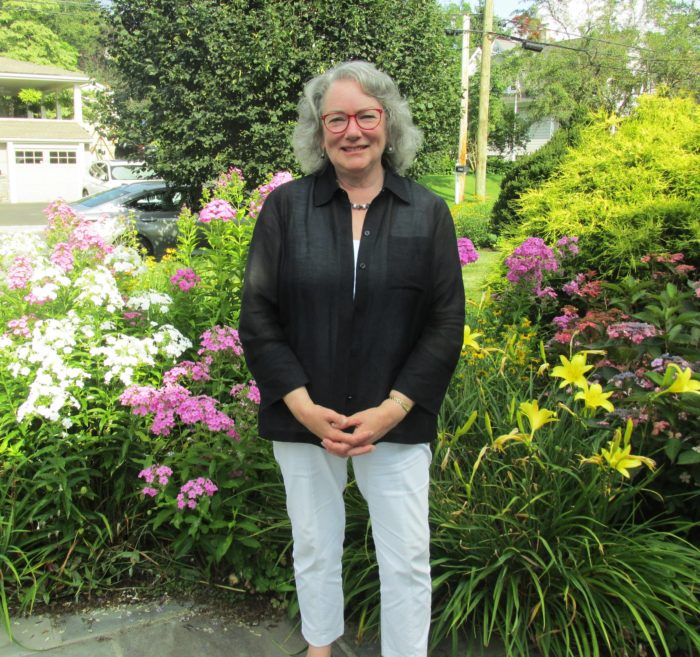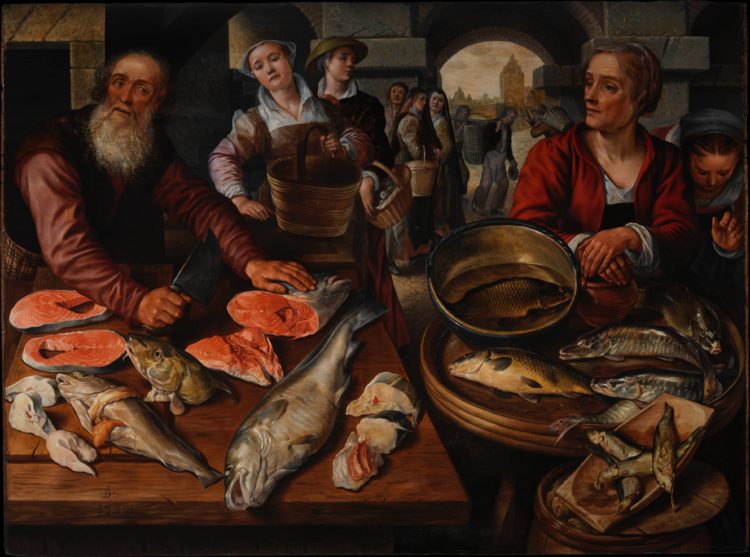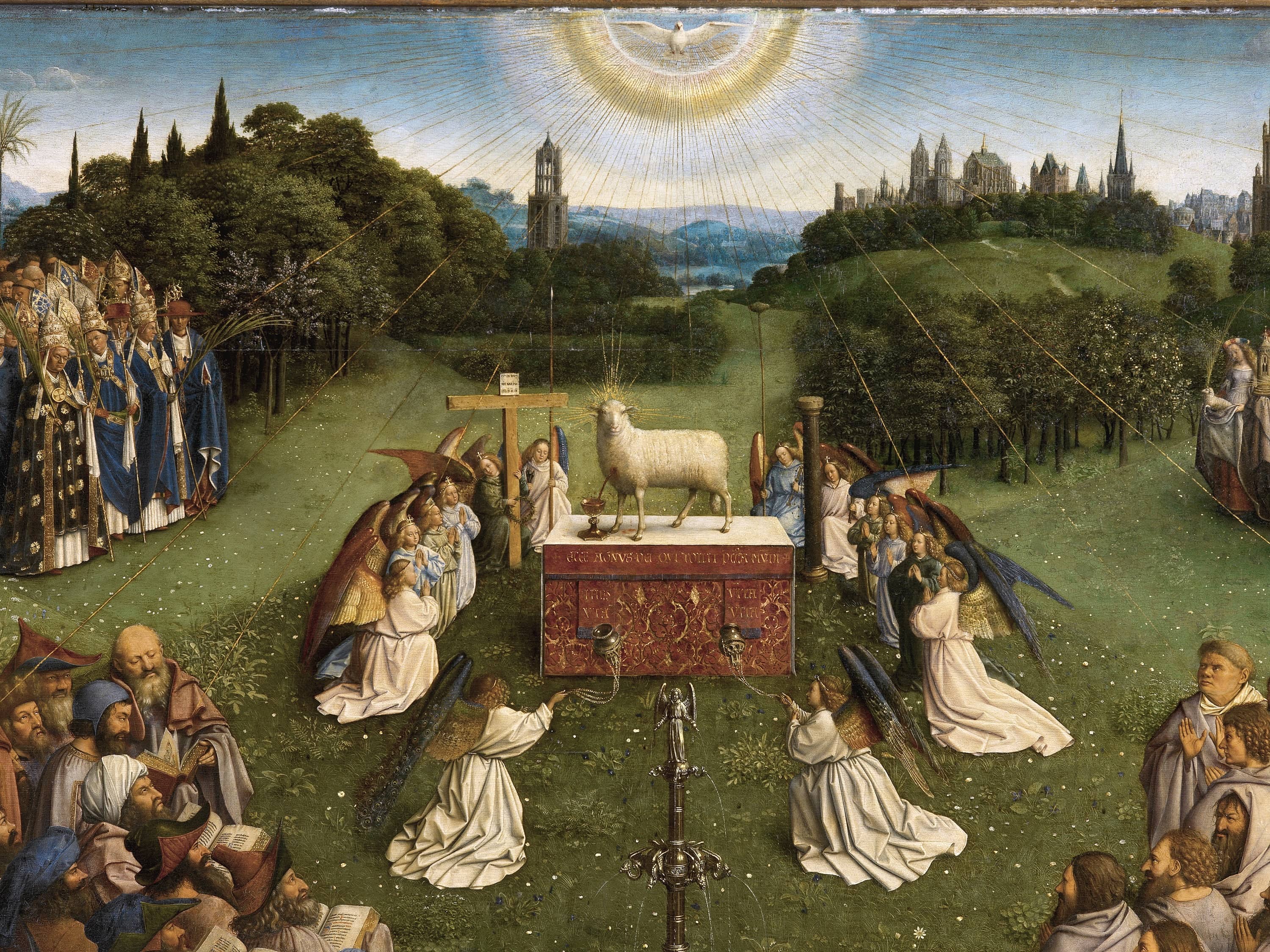by Anne W. Semmes

Imagine living up close and personal with some of the world’s greatest paintings for over 40 years. Introducing Maryan Ainsworth of Old Greenwich, recently retired Curator Emerita of the Department of European Paintings at the Metropolitan Museum of Art.
Having followed Maryan’s career over the years I am privileged to call her by her first name, and it was time to reflect on those decades at the Met and to learn what she’s up to now. So, my first question was how many paintings had she helped procure for the Met over the years?
“A dozen or so,” she began, “But you have to understand that the first 20 years I was there I wasn’t in the European Paintings department.” Yes, she was a research investigator peering through a high-powered microscope studying paintings by Rembrandt, Van Dyck, and Vermeer, then becoming an art historian in paintings conservation. “So, it wasn’t until the last 23 years that I could, as curator, begin to make acquisitions,” she said. “And of course, in a museum with 17 departments some 270 curators were hoping to make an acquisition.”
And acquiring an Albrecht Durer painting was out of the question – “The millions of dollars it would cost is prohibitive. So, we were very pleased to be able to get a very large painting by one of Durer’s best students, Hans Schaufelein, and it’s a double-sided painting that actually belonged at one time to the great Victorian architect and theorist Pugin. And he made the frame for it.…on one side is the death of the Virgin, and on the other side is Christ carrying the cross… So, his style is very close to Durer. And in fact, when it was in Pugin’s collection, they thought it was by Durer.”

Another painting was “Fish Market” by the 16th c. Netherlandish painter Joachim Beuckelaer. “It’s a wonderful, huge painting of a market scene and all the fish are right in the front.” And Maryan has an entertaining write up of the painting on the Met website, entitled “Something Fishy Going On.” “Notice how the old fishmonger, about to make another slice through the succulent salmon, warily eyes the middle-aged housewife to his left. She, in turn, resolutely crosses her hands over the small open vessel on the table before her, as if to signal her response to any untoward advances from the old man.”
As background Maryan explains how painters in the 16th century were “finding it very difficult during the period of iconoclasm when churches were being raided and artworks were being destroyed. They had to find a new market for their paintings. And so, they transitioned from making purely religious paintings to more secular subjects. And this one is a fish market.” And yes, Maryan confesses in that writeup of a favorite pastime when traveling – to visit “open-air markets, especially those stacked high with colorful fruits and vegetables, local dairy products, freshly butchered meats, and bounty from the sea.”
So, what were some memorable moments of those microscope studying years? “Looking at a painting with the infrared reflectography equipment only tells you a limited amount. It’s only by being able to compare what you find there, with many other paintings attributed to that artist, that you can come back to this one and say, ‘That’s not an early painting, it’s a late painting.’ Or ‘It’s not by Gerard David. It’s by one of his followers.’
So, in the late 15th and, early 16th century, she tells of “many more paintings being sold on the open market from stalls at art fairs, than by commissions by individuals. So, artists had to learn how to increase production of art to have enough stock to sell at these art fairs…And one way they did this was to make what we call cartoons or patterns that would then be transferred, a subject like the Adoration of the Magi, for example. The same exact composition, time after time transferred from a cartoon or pattern onto the prepared panel, and then worked up quickly in the painting.”
And with infrared reflectography, she shared, “you could see, instead of a first-time drawing…it’s the first sketch…You find this mechanical-looking only contour lines drawing that was the quick and easy way to move on to the next stage.

Maryan had become an art historian in the Conservation Department. “For me,” she reflects, “it was like going to a seminar every day. Learning from the conservators, what they’re working on, how they approach doing conservation, understanding so much better about painting technique and issues of state and condition of paintings. It’s the kind of training I think every curator should have, but very few have had that opportunity.”
As curator Maryan would step into a project she is still involved with, “The cleaning and the restoration of probably the most well-known and important work of Early Netherlandish painting, Jan van Eyck and Hubert van Eyck’s Ghent Altarpiece.” She calls it “a daunting task.”
“It’s such an icon. It’s so highly revered…It’s like the cleaning of the Mona Lisa. No one wants to touch it…Or the cleaning of the Sistine ceiling. Think of how much controversy there was over that when that happened.”
What evolved was an international advisory commission she serves on, “so that you have different voices talking about evaluating the work as it’s being done…And then saying, ‘Well, what about this? Or ‘Have you looked at that?’ Or ‘In my experience with other van Eyck paintings, I know this, and have you considered this?’”
The Ghent Altarpiece is considered a masterpiece and has an extraordinary history. It was stolen from its St Bavo’s Cathedral home in Ghent, Belgium by the Germans in WWI (and returned), then by Hitler in WWII. Its recovery in the Altaussee salt mines by the U.S. Monuments Men was featured in the 2014 film, “The Monuments Men.”
For safety after the war it was placed in a glass box, tells Maryan, “And people then could walk around the whole Altarpiece.” But a discovery was made that the environment inside that glass case “was not as good as they thought it was.” So, “a full evaluation” needed to be made of the condition of the panels, “and the security of the paint on the panels.”
That discovery led to another and far more important one. What evolved was “a whole project to do some panel work, and approval to go ahead with the cleaning and restoration…in three phases…So this advisory team meets several times a year. We meet in Brussels or Ghent, where the restoration is happening. And at those meetings the conservators tell us what’s going on, what they’ve discovered.”
Known by all was that a 16th century artist, Jan van Scorel, “was asked to clean the altarpiece…But it wasn’t clear how much restoration was done at that point…When the conservators began to work on certain of the panels, they discovered there were significant portions…that had been completely overpainted.”
Should the advisors allow the conservators to remove all of that 16th century overpaint, “hoping to reveal Jan van Eyck, [and brother] Hubert van Eyck of the mid-15th century?” tells Maryan. “And a lot of discussion and evaluation went into it…that they should go ahead and remove that. And the removal is just a revelation because van Eyck has been rediscovered. And what’s bizarre is that for decades and decades, centuries even, art historians, or anyone looking at the surface of this painting thought they were seeing van Eyck and they weren’t. They were seeing van Scorel!”
Continued next week, Maryan Ainsworth shares her tough choice of six favorite paintings from her years at the Metropolitan Museum. She also shares the impact of all those religious Netherlandish paintings on her faith, and what she is working on in her retirement.




